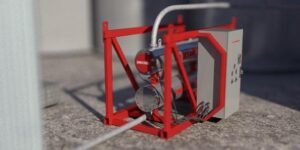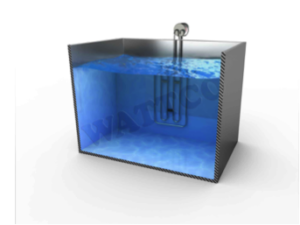How Electric Heating Elements Work with Transfer Fluids
Last updated on April 15th, 2024 at 10:03 pm
 Electric heating is defined as the process of turning electrical energy into heat. This process happens when an electric current passes through a resistor, or a device which turns current into energy. Electric heating can be categorized into two main types – space heating and liquid heating. Space heating has methods like radiant heaters, convection heaters, fan heaters, and heat pumps. For liquid heating, two methods stand out – immersion heating and circulation heating.
Electric heating is defined as the process of turning electrical energy into heat. This process happens when an electric current passes through a resistor, or a device which turns current into energy. Electric heating can be categorized into two main types – space heating and liquid heating. Space heating has methods like radiant heaters, convection heaters, fan heaters, and heat pumps. For liquid heating, two methods stand out – immersion heating and circulation heating.
Immersion Heating
An immersion heater is a device installed in a tank or container to heat a liquid, like water. It may be placed in an insulated hot water tank. Since it is submerged into the solution being heated, immersion heater can prevent heat loss during energy transfer. It is most suitable for water-based and nonflammable solutions. There are three types of immersion heaters—flanged, over the side, and screw plug.
Flanged heaters are typically used in pressure vessels, having bent cubes directly welded into the container. These heaters are ideal for pressure vessels since the heat is divided evenly to avoid carrions. It is usually implemented along with controls located on the outside of the vessel or tank. Over the side heaters are the most basic application given that it is easy to install and removed for servicing. This type of heater is used mainly in tanks, where the heater is fully immersed in the liquid. It can be placed on the side or at the bottom of the tank. Screw plug immersion heaters have tubular elements in a threaded plug. These are screwed directly through threaded opening in tank walls to heat liquids.
Circulation Heating
Also called inline heaters, circulation heating is applied for indirect heating. One example of circulation heating application is heating clean water for industrial washing. Flanged heaters are typically mounted in an insulated vessel for an efficient way of heating the fluid, like water. It consists of inlet and outlet nozzles allowing the fluid being heated to enter and exit the device. Circulation heaters can transfer heat very efficiently to the fluid. Because the heating happens in a different vessel or chamber, circulation heating can be a great choice for a wide range of fluids. These heaters are also easy to maintain and repair as there is no need to drain the fluid from the container. In applying the circulation heater to a clean water, the user should use a pump in bringing the fluid inside the circulation system. The heating element warms the water as it flows inside the chamber. For sufficient heating, water must enter the circulation heater through the inlet close to the flange immersion heater. Desired temperature of the fluid is reached as it flows through the vessel. Water then emerges out of the chamber through the outlet nozzle. The drain valve is one functional feature of circulation heaters. Aside from the fact that it can be installed anywhere in the vessel, it can facilitate easy maintenance by allowing purging of water when needed.

